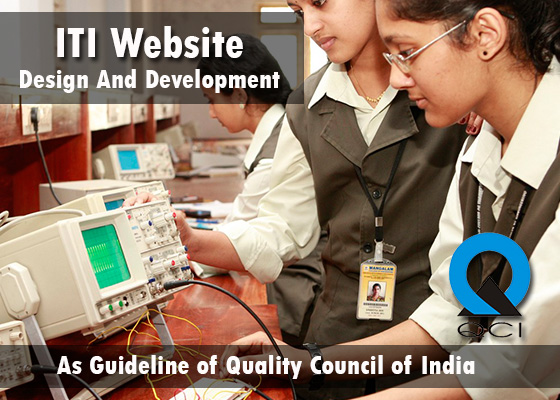Demystifying Board Game Design By Prof. Uday Athavankar and Prof
Demystifying Board Game Design
By Prof. Uday Athavankar and Prof. Prasad Bokil | IIT Bombay
The course is about designing games and so, the treatment of the course is also playful. We invite you to enjoy and have fun. What appears on the screen for you in its current form is a result of experiments over 12 year now. Every year the game design elective was offered to the students. They have come up with great game ideas with two to three weeks’ full time involvement of students. All of them enjoyed these courses, and so did we.
This online course captures the live actions in the course offered in January’ 2019 at IDC, IIT Bombay. So, it has the classroom lectures as well as students struggling with their projects. Besides the faculty, the students will come on the screen and talk about their experiences and exchange their ideas with you.
About this online course
This course is not a typical lecture-tutorial material. There are small and major projects spread throughout. The course switches between practice and theory, often in that order. Solving practice assignments and then revisiting theory would be a more effective way of learning game design.
Theory can clarify some points, but participants cannot learn the art of designing games without attempting and failing in few. It is impossible to learn how to design a game without actually designing few games, failing and trying again. The focus is clearly on self-learning through doing. However, to help the participants in projects, it does include simple tools that could be of some use.
The treatment of the lectures and concepts used are broad enough to cover the basics of game design. However, the examples and assignments deal with educational games because of the authors’ experience and expertise in that area. So, most examples cited here also belong to educational games. However, there is sufficient generic content that is useful for other games with fun and entertainment as objectives.
Game design is a unique type of design problem, demanding a different design approach. Anybody with interest in play and games can come up with good game ideas and they often have. The course is an attempt to demystify game design and also suggests a design process.
Special note
It is possible to register for this course as an individual, if you are motivated by the idea of designing games. However, it is easier to go through the project assignments as a group activity. A group of three is ideal. You cannot prove a game design idea without play-testing it, and you need group to participate in play sessions. So, try and get at least two more students interested to join you.
Course layout
Module 0- Introduction
About the Course
Course Contents
PHASE 1
Phase 1 Introduction
Module 1- Play & Learn
LEC 1: Why Demystify Game Design?
Resource: Students'work in game design at IDC school of design
LEC 2: Games, Play & Education
Resource ALM 1: Video: Forest Kindergarten
ALM 2: Video: Excerpt from Michael Moore's film ‘Where to Invade Next’ (Finland education system)
ALM 3: Video: Turning trash into toys for learning | Arvind Gupta
LEC 3: First Game design Assignment
Resource: Group Assignment 1
LEC 4: DEMO: Self Play Testing of Zero Cost Games
Resource: On Play Testing
Module 2- Games, Play & Learning
LEC 1: Understanding the Essence of Games
Resource: Why design a zero cost game?
LEC 2: Games & Education
Resource: Why games in education?
Resource: Educational games and learning
Resource: How does learning occur?
Resource: Understanding play
Resource: Play-n-learn and cognitive development
Resource: Facets of playfulness
Resource: Games with a purpose
Resource: Design opportunities
LEC 3: Journey of Game Design Course
Resource: My encounters with game design
Resource: Teaching game design - Second accident
Resource: Practice to teaching to theory
Module 3- What Makes a Game a Game?
LEC 1: Developing a Challenge
Resource: Defining Games
LEC 2: What Makes a Game a Game- Part I
Resource: What makes game a game?
LEC 3: What Makes a Game a Game- Part II
LEC 4: What Makes a Game a Game- Part III (Games, races & puzzles)
Resource: Games, races, puzzles and gamification
Module 4 - Test of the Pudding
LEC 1: Initiating Play Testing of Games
Resource: On play testing
Resource: Links to additional zero cost examples
LEC 2: DEMO 1: Play Testing of Word Building Game
LEC 3: DEMO 2: Play Testing of Game on Geometric Shapes
Resource: Why design a zero cost game?
Resource: Video: Games on Hereditary Traits
LEC 4: Reflecting on Play Testing
Module 5 - Never Leave a Good Game Alone
LEC 1: Design Scope in Redesigning Games
LEC2: DEMO 1: Redesigning Scrabble
LEC 3: DEMO 2: Redesigning Tic Tac Toe
Resource: Video: Redesigning Monopoly
Resource: Video: Redesigning Jenga
Resource: Video: Redesigning Abalon
LEC 4: Reflecting on Student Presentations of Redesigned Games
Resource: Design redesign: Why redesign games?
PHASE 2
A short overview of phase I
Phase 2 Introduction
Module 6- Technicalities of game design
LEC 1: Terminologies- 1
Resources: Terminologies I
LEC 2: Terminologies- 2
Resources: Terminology II
LEC 3: Designing a new game from scratch
Module 7- Play of conflict and uncertainty
LEC 1: Creating conflicts and the role of uncertainty
Resource: From artificial conflict to uncertainty
Resource: Generating a good conflict
Resource: Designing game is designing game mechanics
Resource: Complexity of games
Resource: Why offer choices to players
LEC 2: Uncertainty principles
Resources: Uncertainty as a temporal experience
Resource: Injecting uncertainty
LEC 3: Locating inequality-equality cycle in games
ALM 1: Video: Locate inequality-equality cycle Group 1 (Group –Word formation)
ALM 2: Video: Locate inequality-equality cycle Group 2 (Group- Geometric shapes)
ALM 3: Video: Locate inequality-equality cycle Group 3 (Group- Hereditary traits)
Module 8- How Influencers Manage Uncertainty
LEC 1: Introduction to Influencers
Resource: Glimpses of key influencers in action
LEC 2: Use of Thinking
Resource: Games as a cerebral act 1
LEC 3: Use of Skills
Resource: Games as a corporal act
Resource: Can corporal drive the cerebral?
LEC 4: Use of Knowledge and Memory
Resource: Games as a cerebral act II
Resource: Awareness of gameplays and players
LEC 5: Use of Chance
Resource: Give chance a chance
Resource: Influencers in edu-games
Resource: Completing the influencer story
Module 9- How things fall in place
Lec 1: Introducing game design process
Resource:Game and problem solving
Lec 2: Revisiting educational goals
Lec 3: Design process: Building a game
Lec 4: Revising game dynamics
Resource: On play testing
Lec 5: Infrastructure
Lec 6: Major project: Discussion and brain storming
Resource: levels of identity
Resource: Redesign and design of games
Module 9 [annex 1] : Play testing of major project
Lec 1: Play testing – Rajneeti
Lec 2: Play testing – Race-cue
Lec 3: Play testing – Oasis
Lec 4: Play testing – Smacklet
Lec 5: Conclusion
Module 9 [annex 2] : Playing with Senior students
Lec 1: Play test with senior students - Rajneeti
Lec 2: Play test with senior students - Smacklet
Lec 3: Play test with senior students – Farmoney & oasis
Module 10 - How things don't fall into place easily
Lec 1: Design process-alternative starts
Lec 2: And the winner is / Forms of conflicts
Lec 3: Chris Crawford _ what makes game a game - Minimum condition to qualify as a game
Lec 4: What makes a good game
Lec 5: Get Set Go
Module 11 - And the winner is ….
Lec 1: The last inning
Lec 2: Final presentation _ Rajneeti
Lec 3: Final presentation – Race-cue
Summary
Course Status : Upcoming
Course Type : Elective
Duration :
Start Date :
End Date :
Exam Date :
Category :
Teacher Education
Design Engineering
Level : Undergraduate/Postgraduate
ITI Student Resume Portal
रिज्यूम पोर्टल का मुख्य उद्देश्य योग्य छात्रों की जानकारी सार्वजनिक पटल पर लाने की है जिससे जिन्हें आवश्यकता हो वह अपने सुविधा अनुसार छात्रों का चयन कर सकते हैं


